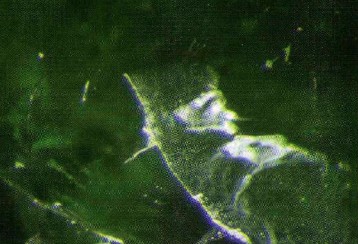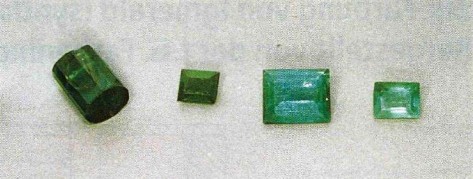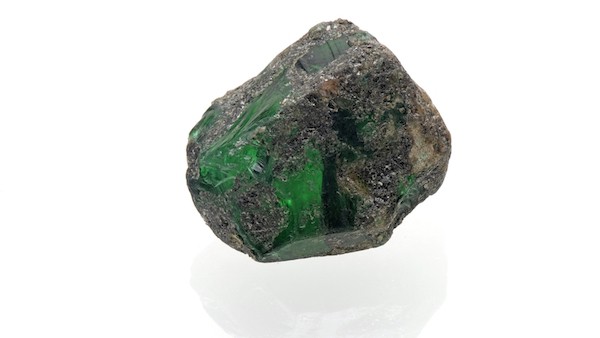
Dyed quartz imitating emerald
First published in Facette 28 (May 2023)
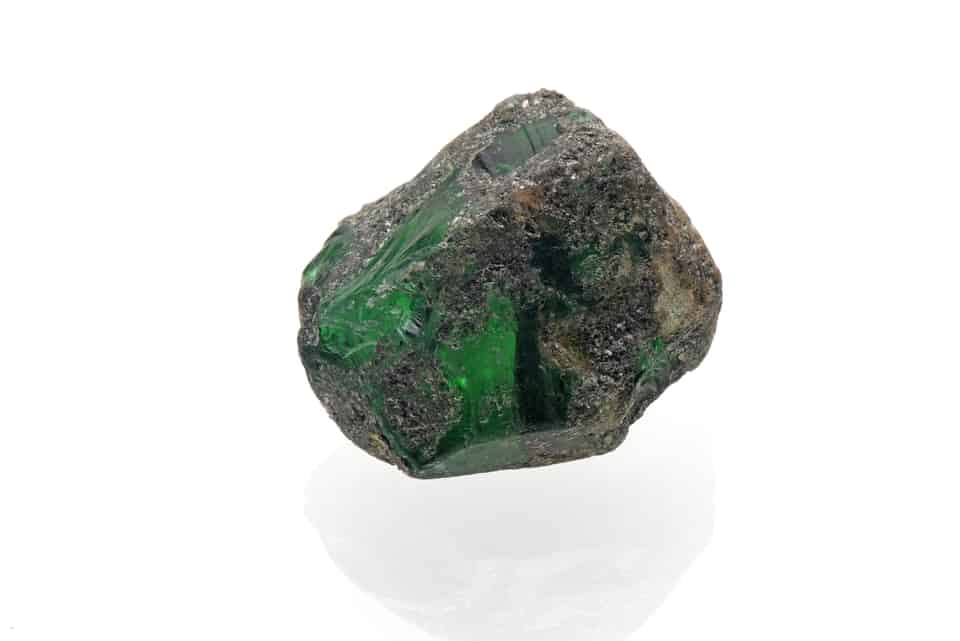
From time to time, we receive some oddities for testing, such as the rough “emerald”, reportedly originating from Africa and submitted by a client for testing.
Already a quick visual examination made it clear that this was not an emerald. The surface was dominated by conchoidal fractures and covered partly with dark mica. A closer analytical examination with Raman spectroscopy clearly identified the stone as quartz. Microscopic observation further revealed that a mix of mica and sand was glued to part of the surface of this rough to cleverly mimic natural minerals commonly attached to rough emeralds found in mica schists, e.g. in the Kafubu area in Zambia.
The relatively homogeneous green colour (resembling that of certain Zambian emeralds) of this sample was due to green colour dye found within the fissures and also mixed in with the glue at the surface. We found neither chromium nor any pleochroism in this stone, which are characteristic features typically found in emeralds.
Want to learn more about emeralds?
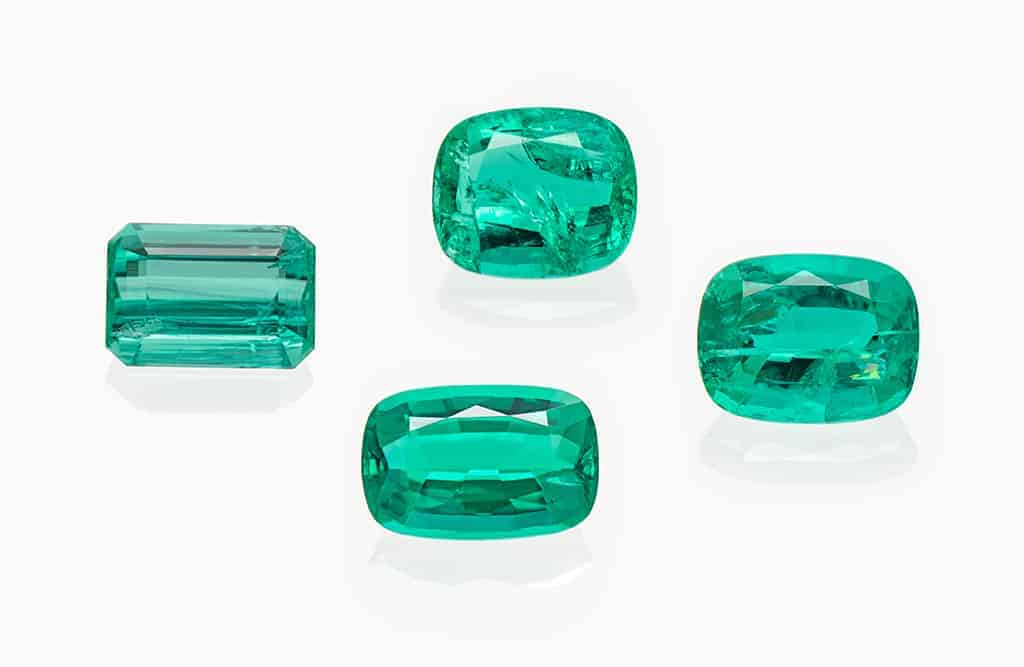
Start your journey to becoming an emerald expert with our free online course “Introduction to emeralds”.
Learn all about emeralds. Their fascinating history, how they form, where they come from. Learn about all the different origins of emeralds and their treatments. Take this course as an introduction to the wonderful world of emeralds.
